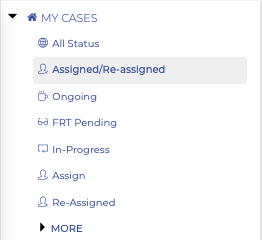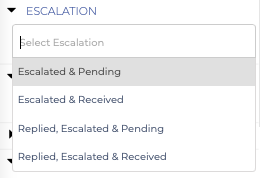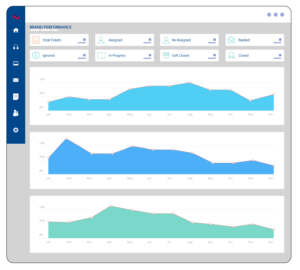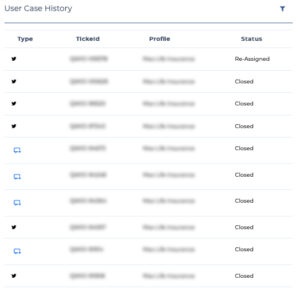The fact that omnichannel customer support platforms can help businesses manage high inbound customer messages seamlessly and increase agent productivity, is imperative in the current CX landscape.
Focusing on customer satisfaction to retain existing and potential customers is critical for companies. In recent years, omnichannel customer service software has become an indispensable tool.
44% of all businesses have already moved to a digital-first approach for customer experience.
But how does one go about using an omnichannel customer support platform to its fullest potential?
What are the key features of an omnichannel customer support platform that can help set you apart from your competition?
In this blog, we will walk you through 8 ways you can use an omnichannel customer support platform to see instant growth in your customer service efforts.
But first, let us take a look at what is an omnichannel customer support platform.
What Is an Omnichannel Customer Support Platform?
An omnichannel customer support platform integrates all your customer service channels such as WhatsApp, Twitter, Email, Facebook, Live chat, and others, into a single inbox.
It enables businesses to focus on delivering a seamless customer experience by providing them with a comprehensive view of their customers and their journey.
8 Best Ways to Use an Omnichannel Customer Support Platform
1. Integrate Live Chat
An omnichannel customer support platform offers you the opportunity to integrate live chat onto all the channels you see fit. It’s important to have a presence on all channels, but you can be more selective about the channels you want to integrate live chat with.
Choose channels that customers typically use for complex issues; you could also deflect customers to a specific channel to manage complex cases.
With a single inbox, your agents can conveniently converse with one customer through live chat on one tab and continue to work on other tickets from other channels.
2. Implement Chatbots
Automation, when done correctly, can be an important part of omnichannel customer retention. Chatbots are simple to customize and can be used for automated responses, service updates, and redirection systems.
Automation is a tried-and-true strategy for improving customer service in three key areas that influence customer satisfaction: response time, handling time, and case status updates.
AI powered Chatbots have an immediate positive impact on customer satisfaction by boosting both the speed of service and the transparency of the service process by informing customers of the status of their inquiries.
3. Automate Grunt Work
With an intelligent omnichannel customer service platform, you can set up auto-routing of cases to the right teams and agents. Customize workflows to ensure agents save time and increase efficiency.
Automate the routing, prioritization, approval workflows, and sentiment analysis of tickets. By auto-tagging tickets, you can empower agents to sort tickets and resolve them faster.
An intelligent omnichannel platform offers a wide range of features that can help your customer service team streamline their process to be more efficient and effective.
4. Leverage Robust Features
Most omnichannel customer support platforms offer a wide range of features to help ensure your inbox doesn’t overflow or get spammed.
Sort cases by their status to ensure tickets don’t go missing or ignored. Your customer service team can assign agents to work on cases based on status.
The majority of tickets are resolved at first contact, but complex cases can be escalated to seniors. With an escalation filter, your senior agents and customer service managers will be able to access and resolve complex cases much faster and keep track of any updates.
5. Constantly Monitor Performance
With an omnichannel customer support platform, your managers no longer need to worry about agent collision.
Managers and team leads can keep a close eye on agent performance, monitor how many cases are coming in, the number of ongoing cases, and how many have been resolved.
Managers can track performance in real-time; they can spot a sudden peak in the volume of tickets coming in to prepare for it.
6. Centralize Customer Journey’s Data
Lack of memory is second only to long wait time, so ensure your customer service agents have all the information they need with an omnichannel customer support platform that provides context to customer cases.
Agents can access all past cases regardless of the channel the customer might have used.
When a customer’s conversation history is decentralized or difficult to access, they must re-explain their inquiry every time a new agent enters the conversation. To address this inefficiency, the best strategy is to maintain a centralized knowledge base, specific action plans, and a centrally located, conveniently accessible conversation history.
7. Include Self Service
Self-service is often neglected as a customer service channel.
As a result, the best omnichannel customer service strategy is developing and maintaining convenient and fully searchable self-service portals or knowledge bases.
Self-service can be offered on any conversational channel to empower customers to support each other
81% of all customers attempt to take care of matters themselves before reaching out to a customer service representative.
8. Cross Channel Comprehensive Insights
The best part of an omnichannel customer support platform is the variety of insights you can access. Apart from customer journey and feedback insights, organizations have easy access to KPIs and metrics in real-time.
You can automate weekly/daily performance reports with the exact metrics you need; reports can be customized to the grain. Your team can customize just about anything, from when you want to receive the reports to how generic or specific you need your metrics.
Businesses can access channel-specific reports or overall customer service performance reports. Regardless of the channel you use, 3 KIP’s you need to measure are:
First Response Time (FRT): measures the time passed between when your customer sent a message to the customer service and when the agent replies.
Average Handling Time (AHT): The average amount of time it takes for customer service to resolve a customer’s issue.
First Contact Resolution Rate: It measures the volume of customer interactions that have been resolved in the first conversation with the customer.
👉 Here are 10 Customer Service KPIs, you should continuously measure
Benefits of Omnichannel Customer Service Platform
1. Say Goodbye to Missing Tickets
With a single inbox, your customer service agent won’t miss a single customer message regardless of the channel it’s from. Even if an agent has sent the first response and closed the tab, they can find it under the ongoing case filter.
Most omnichannel customer support platforms like Simplify360 ensure to prevent any agent collision (when multiple customer service agents respond to the same ticket at the same time).
2. Enhance Customer Experience
With an omnichannel customer support platform, you can easily ensure your customer service team maintains the same brand tone and image across all conversational channels.
It provides customers with a cohesive and seamless experience with your brand. An omnichannel platform frees up your customer service team’s time by encouraging customers to house self-service.
3. Improve Shopping Experiences
Omnichannel customer support platforms empower businesses to help their customers during every step of their journey, not just after their purchase for support. Omnichannel customer service doesn’t just include social media and traditional channels but also pop-up chats on your website, live chat and much more.
You can assist your customers while they shop on your website with a chatbot and a human agent for fallback.
4. Increase Customer Service
The goal of omnichannel service is to make customers’ lives easier from start to finish, removing any friction they may encounter while engaging with a brand. This, in turn, increases customer satisfaction.
Reducing customer effort and response time across all interactions, you create a holistic environment in which your customers can interact with your brand at their leisure.
👉 Once you integrate an omnichannel customer support platform, explore our best practices for Omnichannel customer service blog to learn how you can gain these benefits instantly.
Conclusion
Especially in the current economic trend of low-loyalty, low-retention customer relationships, businesses targeting to become or remain successful cannot afford to delay the implementation of an omnichannel customer service platform.
An omnichannel customer support platform is a one stop-shop for all your customer service needs. So why delay?
Start delivering omnichannel customer experiences now!




